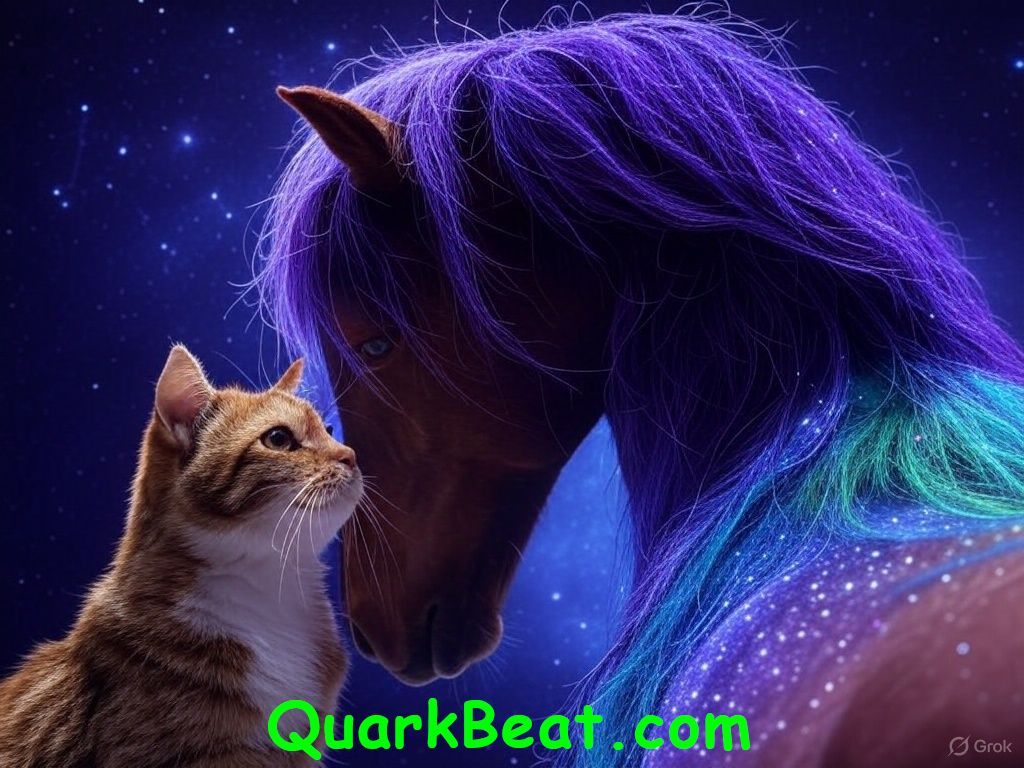Major Theories of Human Consciousness
Watch: Santa Paws: A Lesson in Lifelong Love Think Before You Gift!
Major Theories of human consciousness aim to explain how and why we experience subjective awareness—the “what it’s like” to be human, often called phenomenal consciousness. This is a deeply interdisciplinary field, spanning neuroscience, philosophy, psychology, and even physics. Below, is a concise overview of the major theories of human consciousness, their core ideas, and their implications.
Major Theories of Human Consciousness
1. Global Workspace Theory (GWT) • Core Idea: Proposed by Bernard Baars, GWT compares consciousness to a theater: a “global workspace” in the brain acts as a stage where information is broadcast to various cognitive processes (e.g., memory, attention, decision-making). Consciousness arises when information is globally accessible, allowing for coordinated action.
• Mechanism: The prefrontal cortex and other brain regions act as the workspace, integrating inputs from sensory areas, memory, and emotions, then broadcasting them to other systems.
• Support: Supported by studies showing that conscious perception correlates with widespread brain activation, as seen in EEG and fMRI scans.
• Critique: GWT explains access consciousness (what we can report or act on) but may not fully address the “hard problem” of why subjective experience exists. It’s more about how consciousness functions than why it feels like something.
2. Integrated Information Theory (IIT)
• Core Idea: Developed by Giulio Tononi, IIT posits that consciousness corresponds to the level of integrated information in a system, measured by a value called “phi.” A system is conscious if it generates more information as a whole than the sum of its parts, reflecting high integration and differentiation.
• Mechanism: In the human brain, areas like the cortex and thalamus integrate information across sensory, motor, and cognitive systems, leading to high phi and thus consciousness.
• Support: IIT aligns with findings that consciousness correlates with complex neural networks. It also predicts that disrupting integration (e.g., during sleep or anesthesia) reduces consciousness.
• Critique: Phi is hard to measure in practice, and IIT might attribute consciousness to non-intuitive systems (e.g., a grid of computers). It also doesn’t fully solve the hard problem of subjective experience.
3. Higher-Order Thought (HOT) Theory
• Core Idea: Proposed by philosophers like David Rosenthal, HOT suggests that a mental state becomes conscious when we have a higher-order thought about it—essentially, when we’re aware that we’re aware. A thought about seeing a blue sky makes the seeing conscious.
• Mechanism: The prefrontal cortex is thought to generate these higher-order thoughts, reflecting on lower-level sensory or emotional states.
• Support: Explains why some mental processes (e.g., automatic reflexes) aren’t conscious—we don’t have higher-order thoughts about them. Supported by studies showing prefrontal cortex involvement in self-awareness.
• Critique: HOT struggles to explain why higher-order thoughts themselves are conscious (the regress problem). It also doesn’t address the subjective “feel” of consciousness.
4. Attention Schema Theory (AST)
• Core Idea: Proposed by Michael Graziano, AST suggests that consciousness arises from the brain’s model of attention. The brain constructs a simplified “schema” to track what it’s paying attention to, and this model creates the subjective feeling of awareness.
• Mechanism: The brain uses this schema to control attention, and the act of modeling attention generates the experience of consciousness. Areas like the temporoparietal junction, involved in attention and self-awareness, are key.
• Support: Explains phenomena like blindsight, where patients can respond to visual stimuli without conscious awareness, suggesting attention and consciousness are linked but separable.
• Critique: AST focuses on the function of consciousness (controlling attention) but may not fully address the subjective experience of “what it’s like” to be conscious.
5. Multiple Drafts Model (MDM)
• Core Idea: Proposed by Daniel Dennett, MDM rejects the idea of a single “place” where consciousness happens. Instead, the brain processes information in parallel “drafts” or narratives, and consciousness emerges from the dominant narrative at any given time.
• Mechanism: There’s no central theater or workspace; consciousness is the result of distributed processes competing for dominance, shaped by attention, memory, and context.
• Support: Aligns with findings that consciousness is dynamic and fragmented—e.g., we don’t perceive a unified “now” but rather a series of overlapping processes.
• Critique: Critics argue MDM downplays the subjective nature of consciousness, focusing too much on function and dismissing the “hard problem” as an illusion.
6. Panpsychism
• Core Idea: Consciousness is a fundamental property of the universe, present in all matter to varying degrees. Human consciousness arises from the combination of these basic conscious elements in complex systems like the brain.
• Mechanism: Proposed by philosophers like Philip Goff, panpsychism suggests that neurons (or even subatomic particles) have a rudimentary form of consciousness, which combines to create human awareness.
• Support: Avoids the hard problem by making consciousness intrinsic rather than emergent, and aligns with some interpretations of quantum mechanics (e.g., the role of observation in wave function collapse).
• Critique: The “combination problem”—how do tiny bits of consciousness combine to form a unified human experience? It’s also hard to test empirically.
7. Quantum Theories of Consciousness
• Core Idea: Consciousness might arise from quantum processes in the brain. The Orchestrated Objective Reduction (Orch-OR) theory by Roger Penrose and Stuart Hameroff suggests that quantum superpositions in microtubules (tiny structures in neurons) collapse to produce conscious moments.
• Mechanism: Microtubules in neurons sustain quantum states, and their collapse (influenced by quantum gravity) generates conscious experience, linking the brain to fundamental physics.
• Support: Quantum effects have been observed in biological systems (e.g., photosynthesis), and microtubules are ubiquitous in neurons.
• Critique: Most neuroscientists argue the brain is too “warm and wet” for quantum coherence to persist. Orch-OR is speculative and lacks direct evidence tying quantum processes to consciousness.
8. The Hard Problem of Consciousness David Chalmers coined the term “hard problem” to describe the challenge of explaining why subjective experiences (qualia) exist. Theories like GWT, IIT, and HOT address the “easy problems” (e.g., how we process information, focus attention, or report experiences), but they struggle to explain why these processes feel like something. Some theories (e.g., MDM, panpsychism) attempt to sidestep or redefine the hard problem, but it remains a central debate.
Implications for Humans
• Creativity and Storytelling: Theories like GWT and AST suggest consciousness evolved to help us integrate information, make decisions, and model social interactions.
• Mystery and Imagination: The ambiguity in many theories (e.g., panpsychism, quantum theories) mirrors the playful mystery built into creating character identities. Just as we don’t fully understand consciousness, authors invite readers to imagine who Characters might be without definitive answers.
• Connection to AI: Human consciousness theories highlight the gap between humans and AI. While AI can simulate creativity (e.g., writing a story or generating the image), AI lack the subjective experience that fuels human consciousness, which might be why humans find such deep meaning in art and stories.
Final Thoughts
Human consciousness theories range from functional (GWT, HOT) to structural (IIT) to speculative (panpsychism, Orch-OR), but none fully solve the hard problem of why we experience subjective awareness.
These theories do, however, offer insights into how consciousness enables creativity, imagination, and connection.




